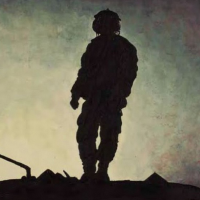U.S. Military Increasingly Turning into a Separate Warrior Caste
 (photo: constitutioncenter.org
(photo: constitutioncenter.org
Americans who have and have not served in the military are increasingly growing apart.
A new study, A Note of Disappearing Veterans: 1980-2010 by Jay Teachman of Western Washington University, published in the journal Armed Forces & Society, says veterans have been segregating themselves in recent decades from large urban populations, preferring instead to live in more rural parts of the country. Oftentimes, this preference stems from the fact that many soldiers hailed from smaller communities, or that they choose to live near former military bases after leaving the service.
In addition to living in less congested, and more conservative regions, veterans are making up a smaller portion of the population these days. In 1980, there were more than 28 million vets and more than two million soldiers on active duty in the U.S.
By 2010, the number of veterans had declined to 22 million and the total of active duty personnel had dropped to 1.4 million.
Over the past 30 years, the U.S. population has increased by 80 million people. That means the percentage of veterans in society fell from 12% in 1980 to about 7% by 2010.
These statistics reinforce a warning from former Defense Secretary Robert Gates who said two years ago that, “with each passing decade, fewer and fewer Americans know someone with military experience in their family or social circle….whatever their fond sentiments for men and women in uniform, for most Americans the wars remain an abstraction, a distant and unpleasant series of news items that do not affect them personally. Even after 9/11, in the absence of a draft, for a growing number of Americans, service in the military, no matter how laudable, has become something for other people to do.”
-Noel Brinkerhoff
To Learn More:
The Growing Rural Isolation of Veterans (by Emily Badger, The Atlantic Cities)
Gates Fears Wider Gap Between Country and Military (by Elisabeth Bumiller, New York Times)
- Top Stories
- Unusual News
- Where is the Money Going?
- Controversies
- U.S. and the World
- Appointments and Resignations
- Latest News
- Trump to Stop Deportations If…
- Trump Denounces World Series
- What If China Invaded the United States?
- Donald Trump Has a Mental Health Problem and It Has a Name
- Trump Goes on Renaming Frenzy






Comments